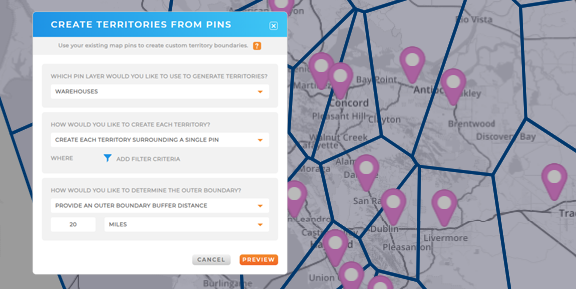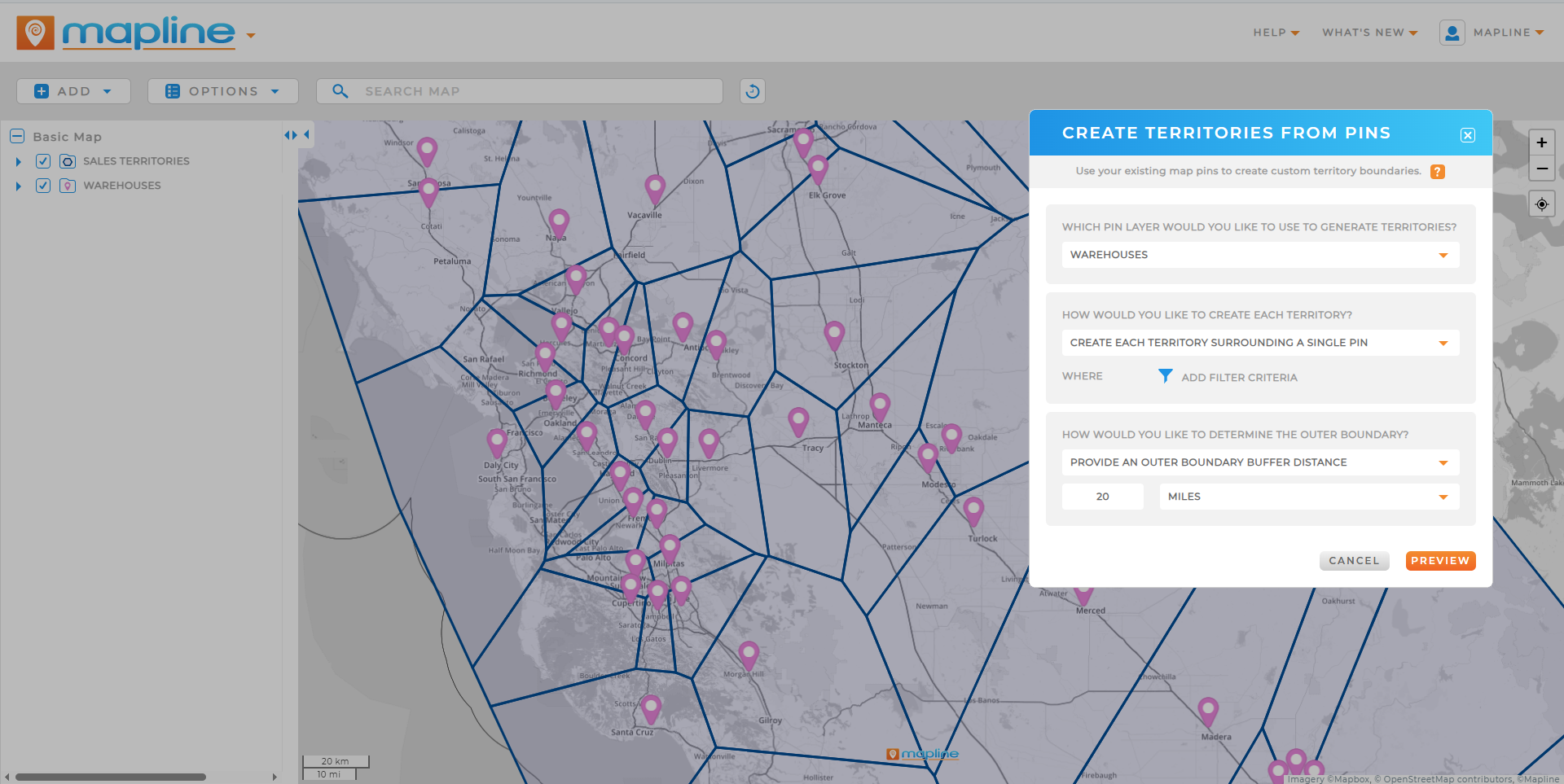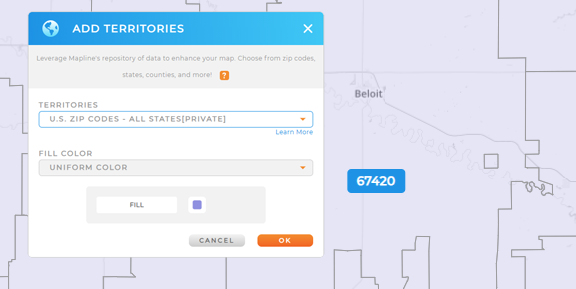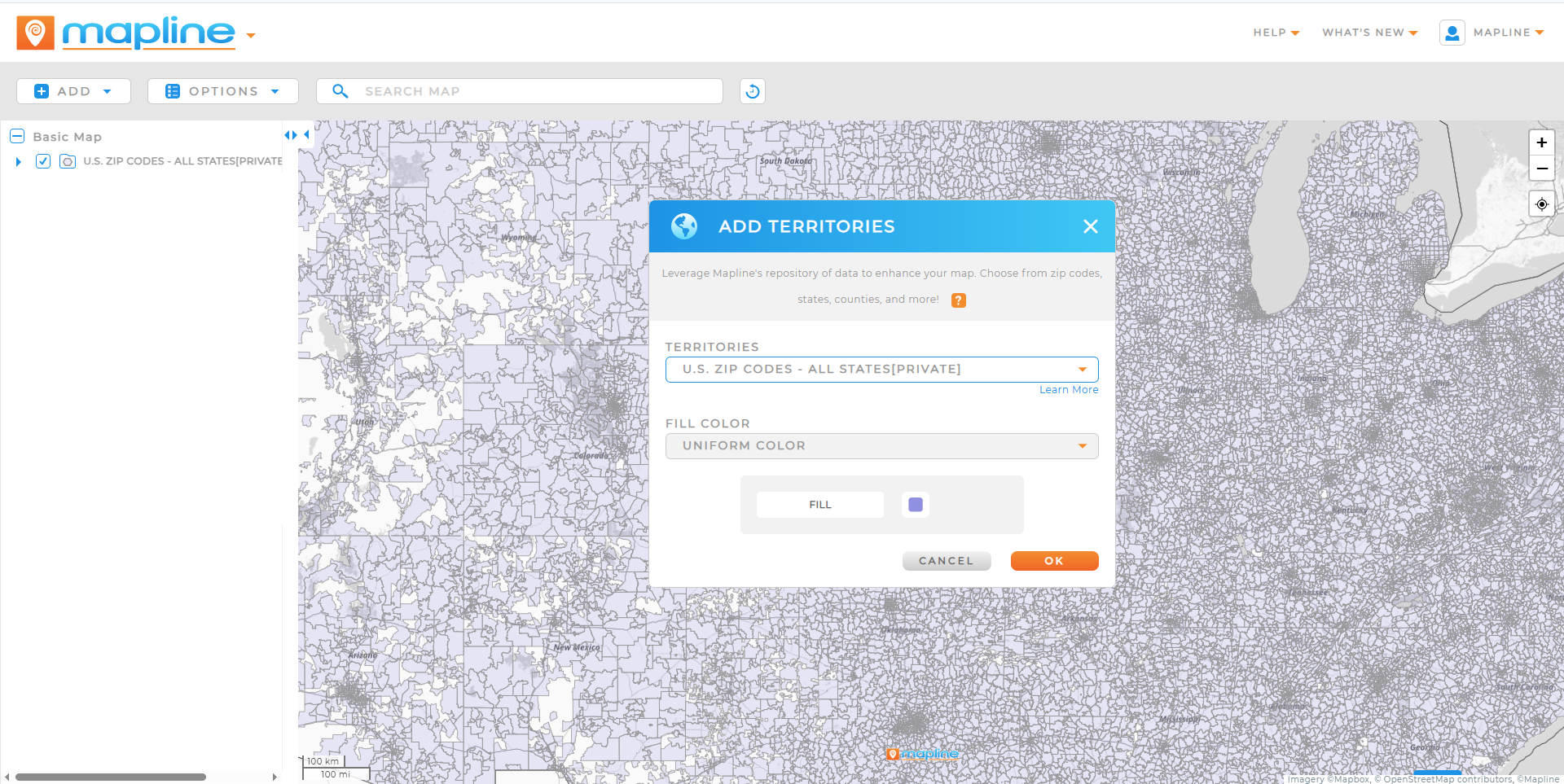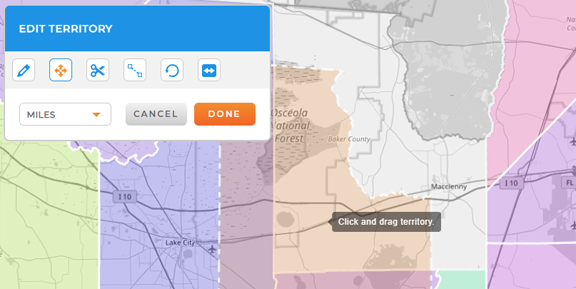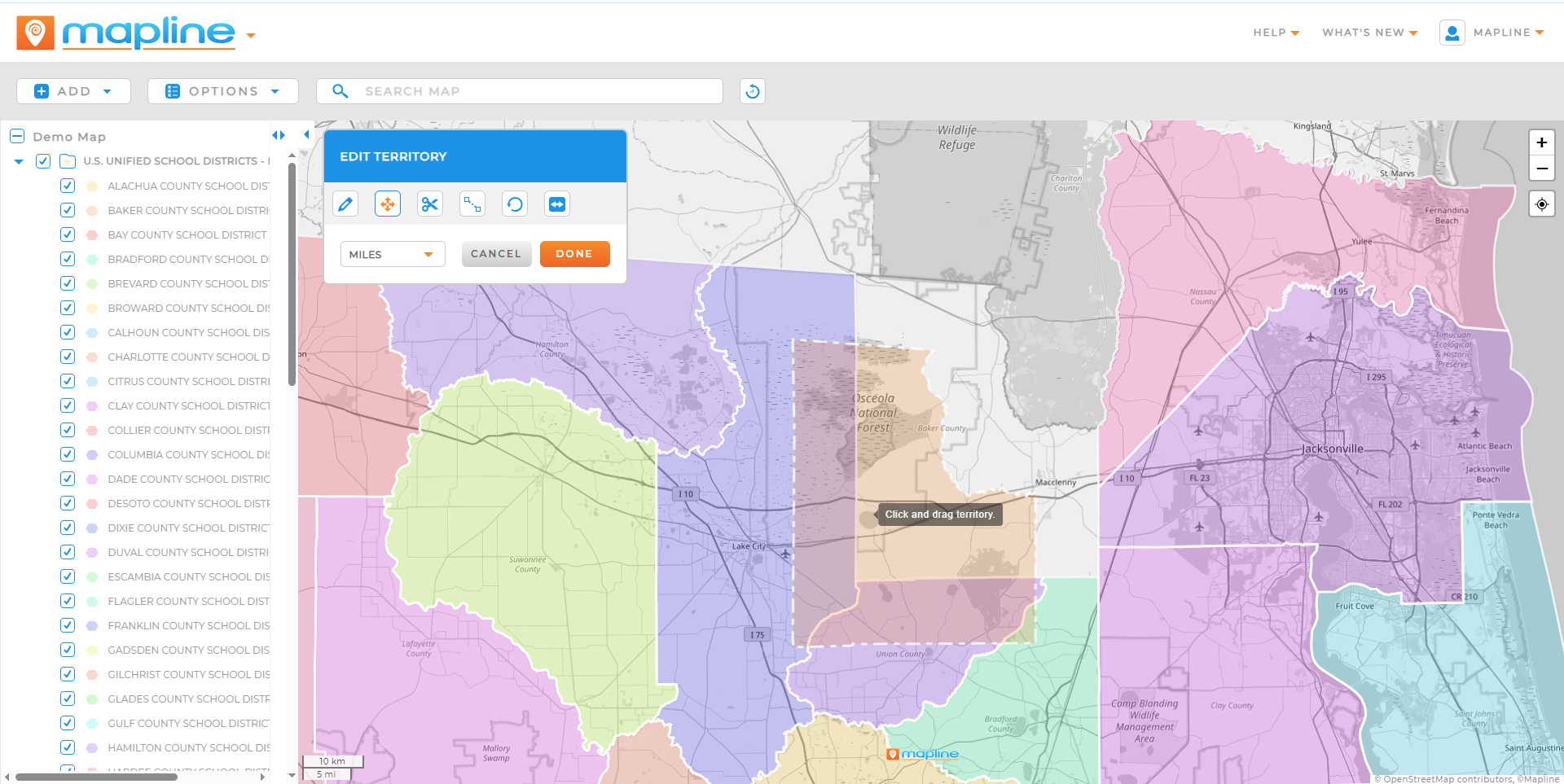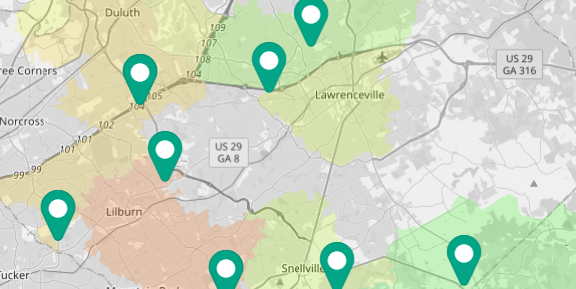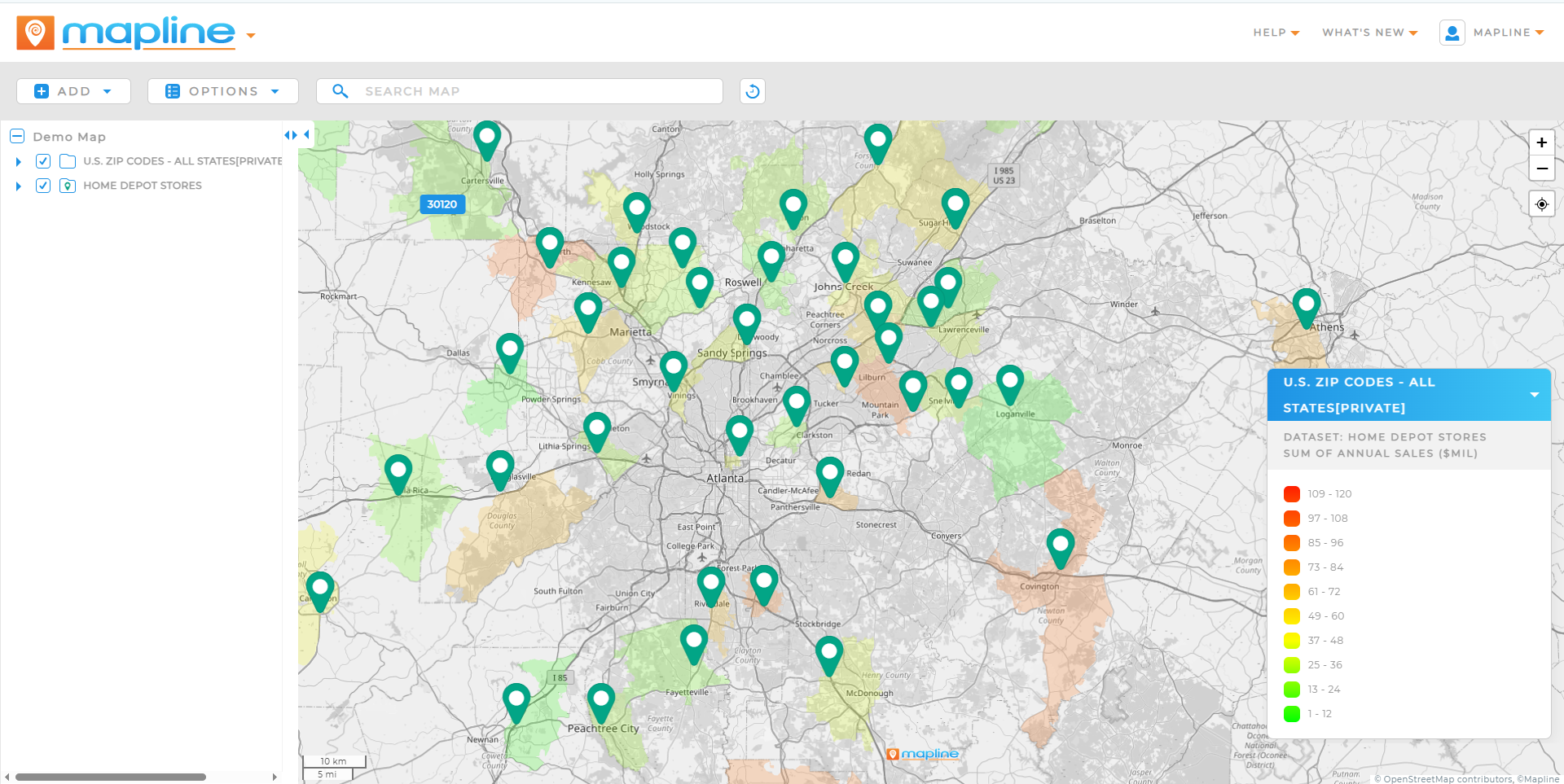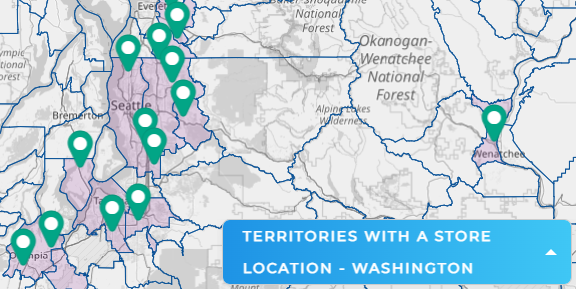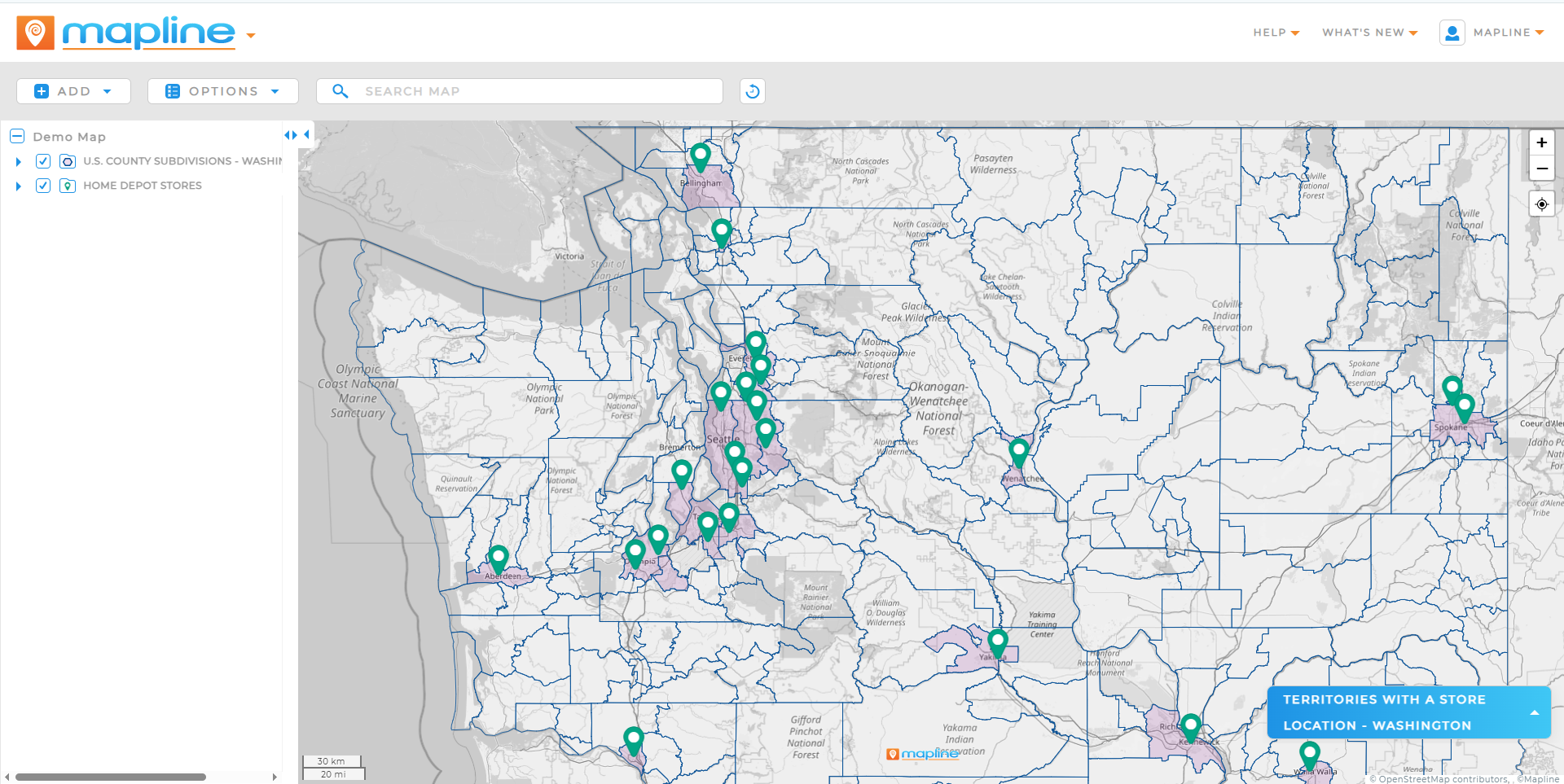- Blog
- Geo Mapping
- Sales Territory Mapping: How to Visualize, Plan, and Optimize Sales Areas with Precision
Sales success starts with smart territory planning. If your reps don’t know where to focus—or if your coverage is unbalanced—revenue opportunities slip through the cracks. That’s where sales territory mapping comes in. By visualizing, defining, and assigning territories with precision, you can ensure your team covers the right areas, avoids overlap, and maximizes performance.
Modern tools like Mapline make it easier than ever to map sales territories using ZIP codes, customer lists, or regional segments. You can assign reps, track results, and rebalance as your business grows—all within an interactive, no-code interface built for fast decisions. Whether you manage a local team or a nationwide network, territory mapping helps you scale smarter.
What Is Sales Territory Mapping?
Sales territory mapping is the process of visualizing and assigning geographic areas of responsibility to individual sales representatives or teams. These maps often include customer locations, potential accounts, performance data, and demographic overlays that help leaders make strategic decisions about who covers what.
Instead of guessing where your team should focus, you use data to inform the structure of your territories. With the right sales rep territory planner, you can balance workloads, reduce drive time, and give each rep a fair shot at hitting their numbers. Tools like Mapline support this process with fast, intuitive workflows for sales team territory mapping—no GIS experience required.
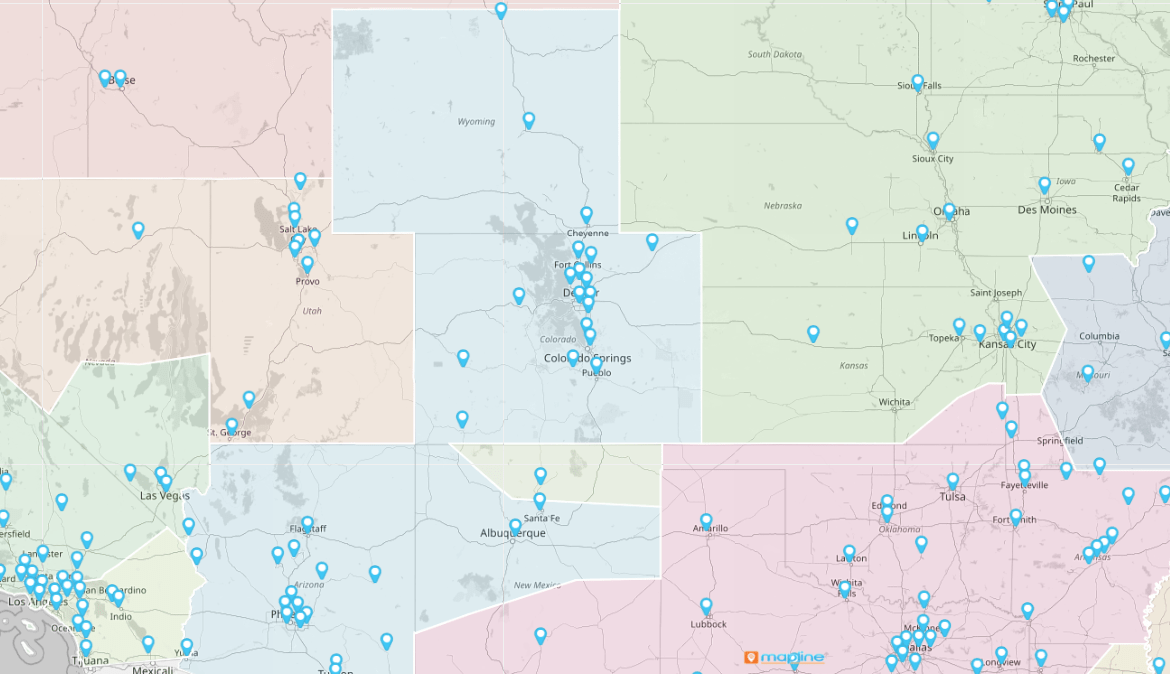

Pro Tip: Don’t just map your current customers; include whitespace areas where you don’t have accounts yet. Identifying untapped regions helps sales leaders prioritize outreach, uncover growth opportunities, and strategically expand market share. With a territory map that highlights both presence and potential, your team can sell smarter—not harder.
Why Mapping Sales Territories Improves Rep Performance
It’s not enough to hand your reps a list of leads—they need clear boundaries, fair workloads, and territory plans that make sense geographically. That’s where mapping delivers real impact.
Here’s how territory mapping drives results:
- Balanced Workloads: Assign territories based on customer count, revenue potential, or geographic density to ensure fairness and focus.
- Reduced Travel Time: When reps work within well-defined regions, they spend more time selling and less time in the car.
- Greater Accountability: Clear territories eliminate confusion over lead ownership and make it easier to track performance by region.
- Opportunity Visibility: Mapping reveals white space, market gaps, or overlap—so you can adjust quickly and efficiently.
Mapline enables map-based sales planning that supports your strategy, keeps reps aligned, and ensures you’re covering your market completely.
Sales Territory Mapping by ZIP Code, Region, or Customer Segments
There’s no one-size-fits-all approach to territory planning. That’s why Mapline lets you define and manage territories in the way that makes the most sense for your business.
Here are the most common ways teams create territory boundaries:
- ZIP Code Territory Mapping: Perfect for businesses with delivery zones, direct mail campaigns, or localized reps. Mapline’s zip code territory mapping tool makes it easy to build and edit by ZIP in seconds.
- Regional Sales Mapping: Draw territories by state, metro area, or district for high-level planning and national coverage strategies.
- Customer Segments: Create boundaries based on account size, vertical, or lead source to ensure reps are assigned based on expertise or potential value.
Whether you’re dividing by postal region or market tier, Mapline helps you create territory boundaries quickly—and adjust them as your strategy evolves.
Tools You Need: Sales Territory Map Software That Works
To plan effectively, you need more than pins on a map. You need software that helps you assign, optimize, and adjust territories as your team and market change. The best sales territory map software makes all of this easy and intuitive.
Look for features like:
- Drag-and-Drop Editing: Draw or modify boundaries by clicking and dragging, not entering formulas.
- Interactive Visualization: See your territory layout, performance metrics, and team assignments in real time.
- Multi-User Collaboration: Share maps with managers, reps, and leadership without version confusion.
- Smart Filtering: Show only high-priority accounts or isolate regions underperforming their quota.
Mapline delivers all of the above in a no-code platform that works out of the box. Whether you’re doing field sales mapping or nationwide account strategy, you get the tools you need—without the complexity of legacy GIS systems.
How to Map Sales Territories with Mapline in Minutes
With Mapline, you can create a sales territory map in just a few steps—without spreadsheets, formulas, or expensive consultants. Here’s how it works:
- Upload your data: Start with a list of customers, prospects, or leads that includes addresses or ZIP codes.
- Choose your segmentation: Use ZIP code territory mapping, custom shapes, or smart filters to divide the map logically.
- Create or auto-generate boundaries: Draw freehand or use Mapline’s smart assignment tools to balance based on workload or region.
- Assign reps: Use our sales rep territory planner to connect each region with the right person or team.
- Analyze and share: Track performance, adjust coverage, and embed maps in team dashboards or reports.
You can also set up logic for mass rebalancing, territory changes, or automated routing—perfect for fast-moving sales orgs that need to stay agile.
Real-World Use Cases: Territory Planning That Drives Revenue
Territory mapping is more than a planning tool—it’s a revenue strategy. Here’s how real businesses use Mapline to streamline operations and boost sales results:
- Multi-Rep Sales Teams: A nationwide B2B team uses Mapline to ensure fair territory splits, track quota coverage, and avoid conflict between reps.
- Service-Based Companies: A regional HVAC business builds customer territory maps to manage technician assignments and reduce overlap.
- Franchise Expansion: A growing franchise network uses regional sales mapping to evaluate whitespace and prioritize new location planning.
- Enterprise Sales: An inside/outside sales team uses map-based sales planning to coordinate regional reps and inside support teams, avoiding duplication and increasing win rates.
From territory visualization to strategic expansion, Mapline gives you the clarity to plan confidently and perform consistently.
MAP YOUR SALES TERRITORIES IN MINUTES
Sales territory mapping isn’t just a tactical task; it’s a strategic advantage. By giving your team clear boundaries, optimized workloads, and map-based performance visibility, you empower them to focus, close, and grow more effectively.
Mapline makes it easy to move from raw data to dynamic territory maps that evolve with your business. Whether you’re managing five reps or five hundred, our platform gives you the tools to visualize, plan, and optimize your sales coverage in minutes, not months.
Use Mapline’s territory creation and filtering tools to assign reps based on geography, account value, or customer type. You can auto-assign or manually drag-and-drop boundaries for flexibility.
Yes—Mapline includes a built-in zip code territory mapping tool that allows you to define and edit territories by ZIP in just a few clicks.
Start with customer addresses or account lists. You can also layer in sales volume, lead source, rep workload, or demographic data to inform smarter territory decisions.
Mapline allows you to see all active territories side by side. You can draw boundaries that snap into place or apply logic rules to ensure clean divisions between reps.
Yes. You can import/export data or connect Mapline to your CRM using integrations or automation tools like Zapier for live syncs.









